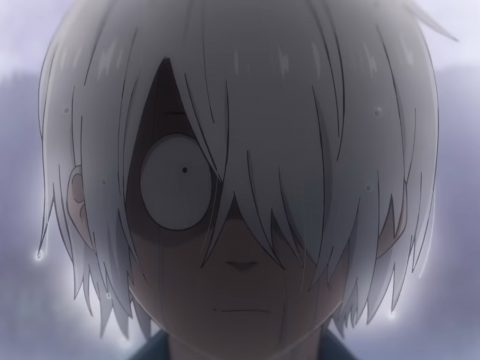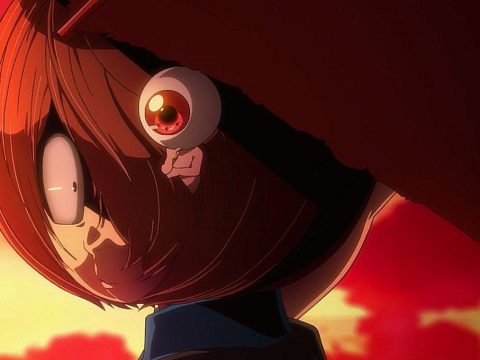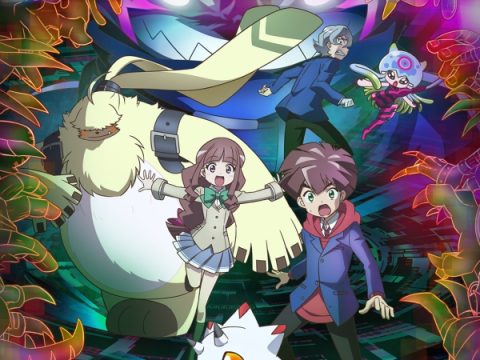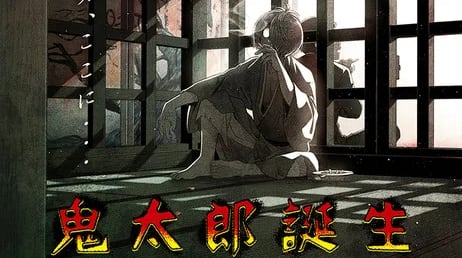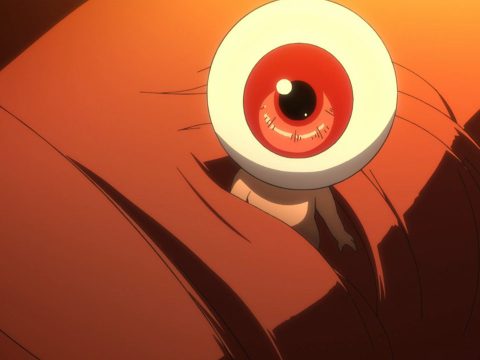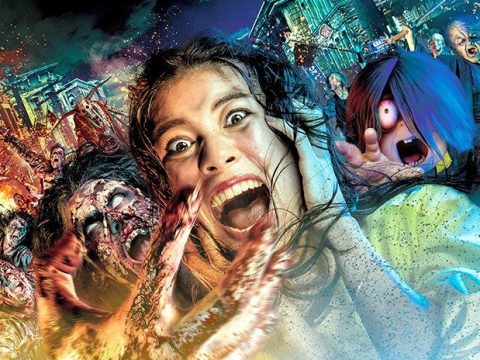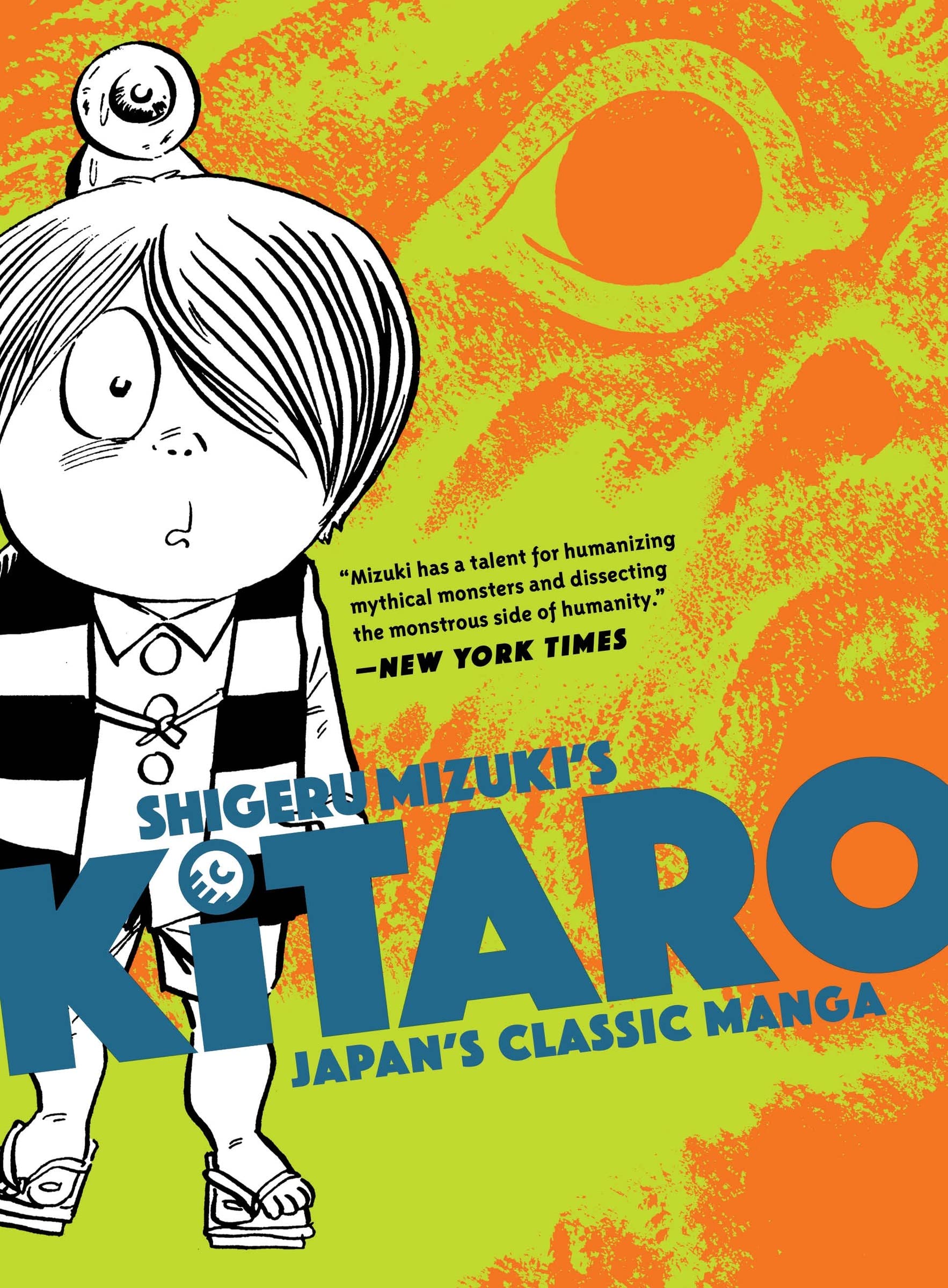 Kitaro mixes horror, weirdness and humor in a unique formula. The main character, Kitaro, is a strange little boy whose father lives in his eye socket . . . in fact, his father is an eye with a tiny body, arms and legs underneath. And that’s just the start of the unusual stuff in here.
Kitaro mixes horror, weirdness and humor in a unique formula. The main character, Kitaro, is a strange little boy whose father lives in his eye socket . . . in fact, his father is an eye with a tiny body, arms and legs underneath. And that’s just the start of the unusual stuff in here.
In each chapter Kitaro finds himself going on various adventures or showing up for various odds situations. He helps one boy get his soul back. He sends some bad guys to hell, even though they’re still alive. His hand gets cut off from his body, but the hand is still able to write a note and return to the rest of Kitaro. All the stories were originally published between 1965 and 1967, with most of them released during 1966.
Various mythical creatures show up, and not just Japanese ones. Some Western favorites like Dracula and Frankenstein’s monster are also in these pages. And while the manga deals with all these horror tropes, it’s never scary. It’s humorous, odd, and amusing. It has some echoes with humorous American horror stories—things like The Addams Family or The Munsters come to mind, and yet Kitaro is different enough it’s not really like them, either.
Part of what makes the story so silly is Mizuki’s skill in artwork. He’s great at making cartoony, ridiculous monsters. At the same time, he’s masterfully skilled at very detailed, realistic artwork. So sometimes you’ll see these cartoony characters with a background that isn’t cartoony at all, but rather looks like an intensely naturalistic and beautifully specific drawing.
An introduction gives background history on Kitaro, and there’s also information on the yokai characters in the back. It has been very popular in Japan (which even led to a Kitaro haunted house) and it’s great to see it published with such care in America.
Story & Art: Shigeru Mizuki
Publisher: Drawn & Quarterly
Translator: Jocelyne Allen
____
Danica Davidson is the author of the bestselling Manga Art for Beginners with artist Melanie Westin, plus its sequel, Manga Art for Everyone, and the first-of-its-kind manga chalk book Chalk Art Manga, both illustrated by professional Japanese mangaka Rena Saiya. Check out her other comics and books at www.danicadavidson.com.


